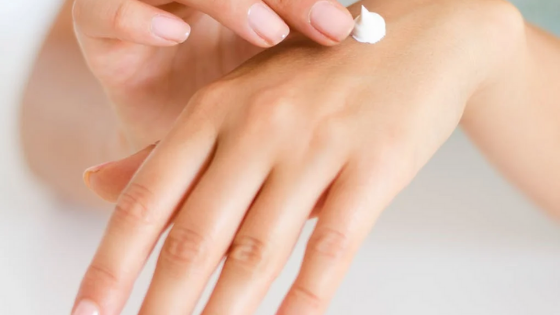


If you have dry skin, you undoubtedly use a variety of products that claim to be designed particularly for your skin type, rather than oily skin. You’ve undoubtedly also questioned why your skin is so dry in the first place. We’re going to break it down for you today.
Our skin becomes dry when the water content of the skin’s outermost layer drops, which can happen for a variety of reasons.
Before we go into those reasons, let’s take a look at what’s going on in this layer.
Stratum Corneum:
The stratum corneum is our skin’s outermost layer, which is made up of dead skin cells. Its primary purpose is to keep the water in our skin from evaporating.
This water content, which is held inside the stratum corneum by a variety of proteins (including keratin and a few others), serves a variety of purposes:
-a) It helps to keep the skin flexible.
-b) It transports enzymes necessary for the skin’s turnover cycle.
-c) Because of the proteins and salts it contains, it draws water from the environment (which it can accomplish even at very low humidity levels).
-d) It includes urocanic acid, a natural UV absorber, which protects the skin from the sun’s UV radiation.
As dead skin cells shed, the stratum corneum is replaced every 30-45 days by a new layer. The skin’s turnover cycle is what it’s called. There’s a lot that goes into achieving a smooth transition.
Disturbances in this cycle might result in water loss in the layer that eventually becomes the stratum corneum. Some causes, on the other hand, might deplete the stratum corneum’s moisture reserves.
Here are some of the ‘disruptions’ and reasons that might cause the water content to decrease.
#1 Nutrient deficiencies
Dry skin can also be caused by a lack of certain nutrients. Sodium, potassium, calcium, and magnesium, for example, aid in the extraction of water from the environment.
#2 Skin problem
Water loss can also be caused by underlying skin diseases such as eczema and psoriasis.
#3 UV Rays
UV radiation from the sun can harm the proteins in the stratum corneum. As you may expect, this would limit the amount of water they contain.
#4 Change in weather
Low humidity and high temperatures, as we all know, cause the water in the skin to evaporate. This, strangely, causes the skin’s turnover cycle to be disrupted, as some proteins require water to operate.
#5 Fat Intake
The stratum corneum also contains lipids that help to lock in the water and prevent it from evaporating. Omega-3 and omega-6 fatty acids, as well as “good” cholesterol, are examples of these fats. If you aren’t receiving the proper quantity of water in your diet, you will lose water.
So, what are our options for dealing with all of this?
-a) Use moisturisers
Emolients are non-cosmetic moisturisers that include substances that alleviate dry skin (such as plant extracts and fats).
-b) Nutrition
Nuts, avocados, flaxseed, salmon, tofu, and olives are wonderful sources of “healthy” fats that help the skin retain moisture.
Increasing our calcium and vitamin K levels by eating enough of leafy greens and dairy helps control the salt concentration in our skin’s fluids.
Vitamin C aids in the formation of collagen, which helps to preserve the structure of our skin. Vitamin C is abundant in citrus fruits, berries, broccoli, kale, and papaya.
Antioxidants: Several natural food pigments can aid in the management of dry skin and inflammatory diseases such as eczema and psoriasis. They do so by neutralising free radicals, which exacerbate inflammation and protein degradation.
To get a customized nutrition consultation for your skin health contact us at +91-9743430000 or write to us at www.quanutrition.com.
©2023 All Rights Reserved Ryan Fernando. Designed and Developed by Floral Web Services